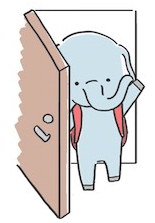ブログスレッド
- Japanese Online Newsletter Vol. 169 義務教育(ぎむきょういく)


日本の義務教育は、小学校1年生から中学校3年生までの9年間の教育のことを指します。義務教育は、国が定めた学習指導要領に基づき、公立学校または私立学校において提供されます。一般的に、小学校は6歳から12歳までの児童を対象に、中学校は13歳から15歳までの生徒を対象にしています。
義務教育においては、国語、算数、社会、理科、英語、音楽、図工、体育などの科目が必修となっています。また、道徳、家庭科、技術科などの選択科目もあります。義務教育の目的は、基礎的な学力や知識を身につけさせることだけでなく、社会的なマナーや思いやりの心、自己表現力などの教育も含まれています。
義務教育は、日本の教育制度の中でも重要な位置を占めており、ほとんどの日本人はこの期間に同じ教育を受けます。そのため、義務教育における教育内容や方法は、国の教育政策に大きく影響を受けることになります。
日本の義務教育は、公立学校においては無料で提供されます。私立学校に通う場合は、学校によって学費が異なりますが、国が定める最低限度の教育内容を満たしている場合は、国からの補助金が支給されます。ただし、入学金や授業料、教材費、制服代などが必要になる場合があります。
また、中学校卒業後に進学する高等学校については、公立高校においては授業料が無料で、私立高校においては学校によって異なりますが、一般的には高額な学費が必要になります。ただし、一定の条件を満たしている場合は、奨学金制度や授業料減免制度があり、経済的な負担を軽減することができます。
総じて言えることは、日本の義務教育は、公立学校においては基本的に無料で提供されるため、経済的に困窮している家庭の子供たちにも平等に機会が与えられているといえます。
Compulsory Education
Japan’s compulsory education refers to the nine years of education from the first grade in elementary school to the third year of junior high school. They provide compulsory education in public and private schools based on national curriculum guidelines. Generally, elementary schools target 6- to 12-year-old children while junior high schools target 13- to 15-year-old students.
In compulsory education, subjects like math, social studies, science, Japanese, English, music, art, and physical education are mandatory. There are also elective subjects like ethics, home economics, and technology. Compulsory education’s purpose isn’t just for students to acquire basic academic skills and knowledge, but also to provide education on social etiquette, compassion, and self-expression.
Compulsory education is an important part of Japan’s education system, and almost all Japanese people receive the same education during this period. Therefore, the country’s education policy greatly influences the content and methods of compulsory education.
In public schools, they provide Japan’s compulsory education for free. In private schools, tuition fees vary depending on the school, but if they meet the minimum educational requirements set by the government, they are eligible for government subsidies. However, attending private schools may require entrance fees, tuition fees, textbook costs, uniform fees, and other expenses.
Regarding high schools, where students go after graduating from junior high school, there are no tuition fees in public high schools. In private high schools, tuition fees vary depending on the school and are generally expensive. However, scholarships and tuition reduction programs are available for those who meet certain conditions, which can reduce the financial burden.
In summary, Japan’s compulsory education is primarily free in public schools, providing equal opportunities for children from economically disadvantaged families.

sign up for the Japanese-Online Newsletter
__..-・**・-..__..-・**・-.._ あいうえお かきくけこ さしすせそ たちつてと なにぬねの はひふへほ まみむめも やいゆえよ らりるれろ わゐうゑを ん __..-・**・-..__..-・**・-.._
#JapaneseOnline #LearningJapanese #FreeJapaneseLessons #JapaneseVideoLearning #JapaneseAnime #Anime #JapaneseFood #Bloguru
- ブログルメンバーの方は下記のページからログインをお願いいたします。
ログイン
- まだブログルのメンバーでない方は下記のページから登録をお願いいたします。
新規ユーザー登録へ